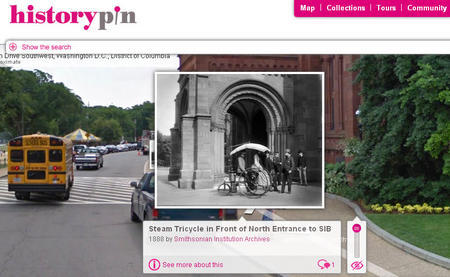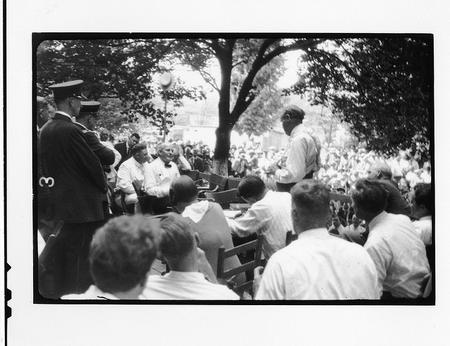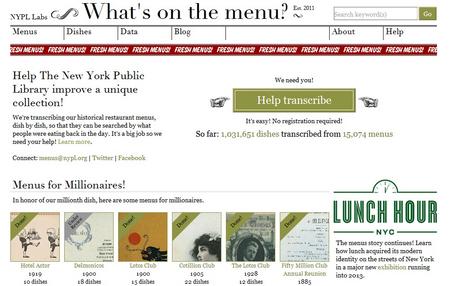Just two weeks ago, I had the opportunity to attend the 2012 Annual Meeting of the Society of American Archivists. Sporting the theme “Beyond Borders,” I was impressed by the recent transformation in how archives and archivists “do business”—how the technological and digital border has for the most part disappeared.
Five years ago, the handful of conference sessions talking about digital records focused on how to capture and preserve born-digital records. This year, most sessions touched on digitization and digital records not as a novelty topic, but as one of today’s facts of life. History and access to it is happening in the digital realm, and archivists around the globe have embraced the Internet’s potential to enhance and expand the ways their organizations deliver services on a daily basis.
Then and now on my phone. Today, people are searching archival collections with their smartphones, accessing primary sources through “wired” devices they carry with them almost everywhere. In many cases, visitors are using the web browsers on their phones to visit an archives website or review the RSS feed from its blog. Mobile apps are starting to roll out. Photos from the Smithsonian Institution Archives collections can be accessed through the Historypin app (you can also see our photos on the Historypin website). You can plot the images on a map, use an embedded Google Street View to superimpose the historic photograph on the location in real time, and contribute your own stories about that particular place.
Going where the people go. More and more, archives, museums and libraries are establishing a presence at popular online social media sites. In places like Flickr, Facebook, and Twitter, they proactively call attention to the rich body of primary source materials in their permanent collections. Some have begun to engage with Wikipedians enhance and expand content related to their collection. Several Wikipedia editing events have been held at the Smithsonian, including our own recent edit-a-thon “She Blinded Me With Science: Smithsonian Women in Science." We are planning another event with the Archives of American Art and other Smithsonian groups for mid-October in honor of the “Wikipedia Loves Libraries” initiative.
Relevant connections. Has someone ever told you about something they’ve just discovered? The connections other researchers have made with a particular set of historical records can stir up new ideas and point to new areas to focus on. Some of the best archival blogs do just that, sharing the stories of people making connections with rich research material relevant to their field of study. In our own case, Archives’ research associate Marcel LaFollette ran across previously unpublished photos from the famous Scopes Monkey Trial, and she and our staff blogged about these finds here on The Bigger Picture. The trial photo set we shared on Flickr have been viewed over a 107,000 times, and people who were actually at the trial have contacted us to share their personal experience of the event.
Conversations enrich collections. Something archives have known for a long time is changing the way we learn more about our special collections. That secret: we are not the only experts. “Crowdsourcing” is another way archives and libraries are inviting others to contribute their own expertise or even simply their interest to enrich parts of their collections. Maybe you took part in New York Public Library’s “What’s On the Menu?” transcription project? It’s still going on with over one million dishes on over 15,000 menus transcribed so far!
These are just some of the huge and valuable changes occurring in Archives worldwide. Are there any issues we’ve missed or innovative archives projects you’d like to share? Please let us know in the comments below.
Produced by the Smithsonian Institution Archives. For copyright questions, please see the Terms of Use.





Leave a Comment